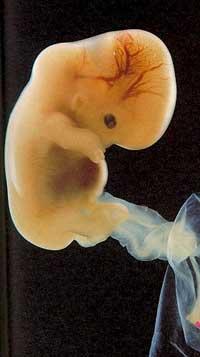First link between the human embryo and the mother
The research has been carried out at the University of California and has been published in the journal Science. According to them, the adhesive is a protein that produces the embryo, L-selectin. Apparently, the protein is associated with carbohydrates that produce the uterus, which allows its application in the uterus. This protein is not the only one that participates in the process, but it seems to be very important: after collecting some polystyrene balls with L-selectin proteins, researchers have shown that they are able to implant them in the uterus.

On the sixth day after the fertilization of the oculus, when the embryo is implanted in the uterus, the production of L-selectin increases. At the same time, the uterus produces carbohydrates that are receptors of this protein. In fact, the uterus produces these carbohydrates throughout the pregnancy and also participates in the growth of the placenta.
Researchers want to use this discovery to increase the degree of success of in vitro fertilisation. In in vitro fertilisation, only a third of the embryos that are produced achieve implantation in the uterus and, taking into account this protein, hope to increase the viability of the embryos. For example, it can be analyzed if the embryos created in vitro produce or not correctly L-selectin, so that the embryos are transferred with greater probability of being viable. In addition, in women, it is also possible to analyze whether or not they have sufficient reception in the uterus. The key to many women with fertilisation problems can be here.
On the other hand, some immune system cells also use the mechanism of L-selectin. In fact, leukocytes adhere to the blood vessels thanks to this protein, reaching the tissue in which the causes of the infection are found and fighting them.
Buletina
Bidali zure helbide elektronikoa eta jaso asteroko buletina zure sarrera-ontzian











